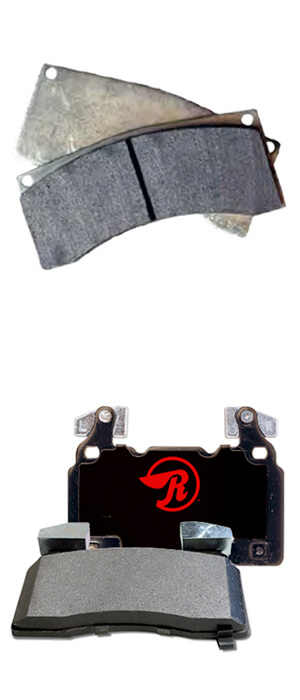Racing & Performance Burnishing Procedures
RACING AND PERFORMANCE BEDDING PROCEDURES
When installing high-performance brake pads, the bedding procedure is essential. Unlike other brake pads for street use, high-friction performance and racing compounds require a much more thorough process in order to properly condition the pads and rotors. Failure to do so can result in reduced performance and stopping power.
If done correctly, the bedding procedure does at least three things to the pads and/or the rotor:
- Physically and thermally converts the composition of the pad and/or rotor surfaces
- Heat cycles the entire pad structure and the rotor
- Creates a friction transfer layer, mating the pads with the rotor surface
Note: These procedures should only be performed on a race track or another safe location. You should be able to safely and legally obtain speeds up to 70 MPH while also being able to rapidly decelerate.
Recommended Procedure:
Before you begin the bedding procedure, start with a series of light decelerations to gradually build up some heat in the brakes. Use an on-and-off the pedal technique by applying the brakes for three to five seconds, and then fully release them for roughly twice as long as the deceleration cycle.
Once you build up enough heat in the brakes, complete the following steps to properly break in the pads:
- Perform 10 moderate brake applications from 45 to 10 mph at approximately one-quarter-mile intervals.
- Make 10 somewhat harder brake applications from 60 to 10 mph at approximately one-half-mile intervals.
- Drive one-and-a-half miles.
- Make eight to ten hard (but less than ABS) applications from 70 to 25 mph at three-quarter-mile intervals. Allow an equal time off-brake between each stop. The pads should now be providing a positive and consistent response.
- Drive at least two miles after the last application at a moderate cruising speed, with the least amount of brake contact possible, until most of the heat has dissipated from the brakes.
- Park the vehicle and allow the brakes to cool to ambient air temperature. Avoid sitting stopped with the brake pedal depressed to hold the car in place during this time.
WARNING: If any amount of brake fade is observed during the bedding process, immediately begin the cool down cycle.
Post-Bedding Inspection – All Vehicles
After the bedding cycle, the rotors should exhibit a uniformly burnished finish across the entire contact face. Any surface irregularities that appear as smearing or splotching on the rotor faces can be an indication that the brakes were brought up to temperature too quickly during the bedding cycle.




